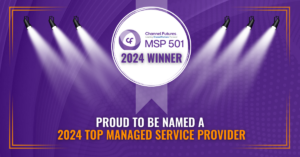
IT services experts in Los Angeles recommend business continuity solutions for a number of reasons; not least of which is technology’s rapid pace of development. There is no 100% secure solution out there. Technology is designed by people; meaning clever enough individuals can certainly find means of exploiting it underhandedly if they choose. Additionally, Moore’s Law predicates a technological doubling every eighteen months or so. So by the time all the problems, vulnerabilities, and issues are identified, new ones have developed. This requires professional support for the best protection. Additionally, it involves establishing a data safety net such that if even the best security fails, you absorb a minimum of loss. There are a number of elements to an effective business continuity solution, they include:
- Properly Securing Operations Departmentally
- Regularly Testing Your Business Continuity Solution
- Knowing and Applying The 3-2-1 Approach
Departmental Security
One of the first things IT services experts in Los Angeles will advise you to do in establishing a continuity solution is determine the total extent of your needs. How many departments do you have, and what is their place in the network? Does your network link everything together? Does it isolate certain IT elements? If a virus were to compromise one area of operations, could that area be digitally quarantined from the others and booted on its own? Or are all your operations facilitated through a single operational network that is totally interconnected? Different answers will come, depending on the size of a business. Generally, the larger a business becomes, the more disparate its departmental networks. If you have multiple networks, you want multiple business continuity contingencies. You’ll need specific backup if everything is compartmentalized. You’ll need total backup if it isn’t. Know what the situation is before you start designing solutions.
Regularly Testing Your Business Continuity Solution
Once you’ve established continuity protocols for your operation, you need to test them. You need to test them regularly, and backup systems should be periodically upgraded. You’ll likely need to switch them out at intervals, owing to the earlier-mentioned Moore’s Law. About every three to five years, systems generally need to be replaced. You can keep things longer than that, but it’s inadvisable simply for the expansion of data. Where a few years ago, gigabytes defined the storage limitations of hard drives. Today, it is terabytes. Petabytes will follow, then exabytes. Older servers may not have the ability to properly deal with things that develop as technology advances.
Knowing and Applying the 3-2-1 Approach
You should have three different backups for your data at a minimum. At least two of those backups should be stored on diverse media. You want a server backup, external hard drives, USBs–whatever is convenient and realistically applicable. The third backup should be stored offsite if something knocks out your entire business unexpectedly. Cloud computing solutions can be especially ideal here and are often being recommended by MSPs for their comprehensive effectiveness and affordable cost.
Safeguarding Your Business
IT services in Los Angeles through Advanced Networks can help you define what your business continuity needs are and design a testable system of backup which will comprehensively protect your data. Contact us now for security solutions and technological innovations that can help you optimize and safeguard your business.




